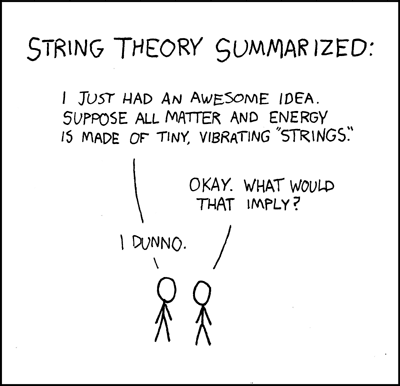How do you write a concept paper? Why is there a need to write one before writing a full-blown thesis proposal? How do you write a concept paper?
This article explains why a concept paper is important before writing a full-blown research paper. It also provides a step-by-step approach on how to write it.
I once browsed the internet to look for information on how to write a concept paper. It took me some time to find the information I wanted. I did find some, but I am not entirely satisfied with those explanations. The explanation and discussion are either too short or vaguely explain the concept paper.
Preparing a concept paper entails different approaches, but I somehow drew some principles from these readings. I wrote a concept paper in compliance with a request to come up with one. Nobody complained about the output that I prepared.
I remembered once again when a colleague asked me the other day to explain a concept paper and how to write it. He needs this information because students have been asking him how to write it.
To him and his students, I dedicate this article.
What is a Concept Paper and Why Do You Need It?
Before going into the details on how to write a concept paper, let me explain what a concept paper is and why you need it.
A concept paper serves as a prelude to writing a full-blown manuscript.
What do you consider a full-blown write-up? It could be a thesis, a program, a project, or anything that will require a longer time to prepare.
In essence, a concept paper embodies your ideas on a particular topic or item of interest. The concept paper saves time because your thesis or review panel may say that your concept is not worth pursuing.
A concept paper should consist only of 1 or 2 pages. Alternatively, if you want to deal with complex issues that require expounding on the ideas, it can go up to 5 pages.
For example, as a student, you will be asked to prepare your concept paper before writing your thesis proposal. This task means that you need to develop an idea and express it for others to understand. The central idea of that concept paper is your thesis statement.
You may glean from either your experience or from your literature review. Of course, your topic should be within your respective area of specialization. It makes sense to be an expert in your field.
If you are a computer science student, you might want to study the behavior of wi-fi signals bounced to different kinds of material. Alternatively, maybe you wish to create a simple gadget to concentrate signals for a portable USB wi-fi connection to improve its performance.
Or perhaps you would like to find out the optimum cache size for the most exceptional browsing experience on the internet. The list could go on.
How Do You Write a Concept Paper?
As I mentioned a while ago, there is no hard and fast rule on how to write a concept paper. It is not desirable to have a format, as your ideas tend to be limited. You may miss some critical points.
The ultimate goal is for you to be able to express your intention. What do you want to do or achieve?
How should you write the concept paper as a prelude to a thesis? What should it contain?
A concept paper must have at least the following elements:

1. A Rationale
You explain here why you need to undertake that thesis proposal of yours. You can ask yourself the following questions:
What prompted you to prepare the concept paper?
Why is the issue of such importance?
What should you be able to produce out of your intended study?
2. A Conceptual Framework
A conceptual framework serves as your guide in working on your idea. It is like a map to follow to arrive at your destination.
An excellent way to develop one is to do a mind-mapping exercise. That brings up another thing, what is mind mapping anyhow?
A mind map is simply a list of keywords that you can connect to clarify an individual issue. It is our subconscious’ way of analyzing things. We tend to associate things with other things. This tendency relates to how we recall past experiences.
In the field of computers, we have the so-called “links” that connect commands in a computer module to make an application program work.
How does mind mapping work?
You have to come up with a word, for example, that will help you start. You can begin with an issue on computers and, from there, generate other ideas that connect with the previous one.
The following video explains how to build a mind map using XMind, my favorite mind mapping tool.
3. Your Hypothesis
Once the idea of the conceptual framework is quite clear to you, write your hypothesis. A hypothesis is just your expected output in conducting the study. It arises from the conceptual framework that you have prepared.
Once you have identified the specific variables you would like to study, ask yourself the following questions:
- How are the variables related?
- Does one variable affect another? Alternatively, are they related at all?
A quick review of relevant and updated literature will help you identify which variables matter.
Nowadays, it’s easy to find articles on your topic using the internet, that is, if you know how to do it. You can start by going to doaj.org, a directory of open access journals. And of course, Google Scholar is an indispensable source of scientific articles. Just find the best and relevant ones for your literature review.
Example of Hypotheses
Considering the issues raised a while ago, the following null hypotheses can serve as your hypotheses:
1. There is no significant difference in wi-fi signal behavior between wood and metal.
2. There is no significant difference in browsing speed between a ten MB cache and a 100 MB cache storage setting using Mozilla Firefox.
Final Note
At this point, you may already have a better idea of how to prepare a concept paper before working on a full-blown thesis proposal.
If you find this discussion worthwhile, or you would like to clarify further the discussion above, your feedback is welcome.
© 2012 October 31 P. A. Regoniel | Updated: 12/5/21
[cite]


Thanks for the feedback Peter.
very systematic and well written. Now I have an idea what concept paper is all about.
Welcome Tee Cee. Glad to know this article helped.
It’s been of great help for my concept paper.I was just lost not knowing to start but I’m found.Thumbs up Patrick!
Dear Denis,
Thank you for your feedback. I’m glad that the article I wrote helped you and many others working on a similar assignment.
Take care and God bless…
Patrick you are such a blessing,I had no idea on how to write a concept paper and yet I have an assignment over the same,I hope to always get in touch for your guidance
It’s been 2mos. that am searching on how to write a concept paper for my requirements, it’s hard to start f u dont know what u r going to work for.. thanx for this page..I’l be reading tonight to have knowledge on it..
yeah its very effectable.. thank you
Thanks a lot for this practical education.
Welcome faezeh.
i realy like it. it was much helper for me. thanks a lot
I had have no any idea about the concept paper but now I can try mine. THANKS
Glad to know that Bibiana.
Thanks a great for enlighting me with such gd info.
You’re welcome Omam. It’s great to hear your encouragement.
I’m glad to be of help tsungai. Thank you for reading this article.
its amazing and very helpful.asy to read,understand and make my own.
Welcome Gabby. I’m glad this article helped you…
Thank you a mill… for this article. This will not only assist with my concept page for my DBA application but my also with constructing a good topic.
Good article!…write a book on the same!
Welcome Aiwinia. I’m glad you are learning from SimplyEducate.me. I am glad that I have addressed your needs. Your feedback encourages me to write even more. 🙂
let me get more explanation from you as an expert..what are we supposed to consider much especially when writing background of the study?? is it necessary to use both hypotheses and reearch questions in one study?? or only one can be employed? example to use only research questions in quantitative research. thank you
Dear Aiwinia, a study always has research questions and hypothesis as tentative explanation of a phenomenon. You conduct research because you have questions in mind on some unexplained fact or event that you observed. Those questions are your research questions and the tentative answer you give to the cause of that fact or event is your hypothesis.
I hope that addresses your question. Thank you for visiting simplyeducate.me.
I LIKE THE WAY YOU TRIED TO GIVE EMPHASIZE ON HOW TO WRITE A CONCEPT PAPER..THANK YOU….I AM LEARNING MANY THINGS FROM YOU.
This article has made some fear I had about writing a concept paper disappear. Thank you.
Your article is very helpful.
I love your article. It has been written systematically to cover all the issues of conceptual writing and literature reviews. I learned a lot from your article. You did a great job, your writings going to help so many people who are not clear where to start. Keep on writing please.
Thank you for visiting my site Daphne. Your remark encourages me to even write more. I’m glad to read such feedback.
thanks alot .your article is of great help to those intending to write a concept paper like me
I attended a workshop on concept paper writing. I found it more confusing because the coach was looking for alot of information. This one is simple and easy to follow. Thanks
Thank for this article it has been helpful to me for improvement of writing concept paper
Dear Dr. Kyejo, thank you for your kind feedback. I’m glad to be of help.
yea this is very useful especially for people like me preparing to do research concept document at post grad level and new in the field of research.
Is a concept paper the same as a research proposal?